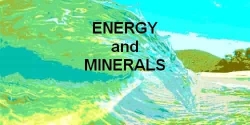Oil Exploration in the Marine Environment
Oil Exploration in the Marine Environment
adapted to HTML from Australian Institute of Petroleum with permissionGovernment
approval
to explore and produce petroleum
Types of risks and
potential impacts
Greenhouse / Climate Change
Decommissioning
Oil spills
Marine protected areas
see also Hydrocarbon Fuels...
see also Oil Deposits ...
see also Offshore Drilling...
see also Oil Spills...
see also Refining Oil...
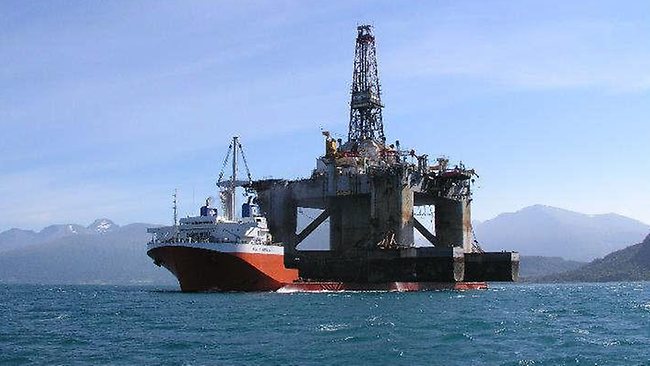
Australia's marine environment is special in many ways - it covers an enormous area, over one and a half times larger than Australia's land surface; it extends from the tropics to Antarctica. It includes extensive submarine environments including sea grass beds and unique coral reef systems which support an array of marine creatures from whales, dugongs, dolphins and seals to thousands of species of fish, shellfish, and a myriad of microscopic organisms. According to the Federal Environment Department (State of the Marine Environment Report 1995) our marine environment is in very good condition.
The petroleum industry shares the community's concern for the protection of the marine environment. Conserving biological diversity and maintaining ecological processes and systems are among the core objectives of ecologically sustainable development which have been endorsed by the petroleum industry. The responsible development of petroleum resources from offshore areas is consistent with achieving these objectives. Petroleum resources are not easy to find, nor are they often located in convenient places for oil or gas to be extracted, processed and sent to be used by the community.
Most of Australia's petroleum production comes from offshore wells. Exploring for oil and gas under the sea bed, and the production activities which follow a successful exploration program, all involve some risks and potential impacts on the marine environment. Clearly identifying these risks and impacts and developing detailed management plans to avoid, prevent or minimise them is a vital and integral part of planning these exploration and production activities.
An independent review by eminent scientists of the environmental impacts of offshore oil and gas exploration and production concluded that the Australian offshore petroleum industry has had no significant effects on the marine and coastal environment in over twenty-five years of operation. The industry is committed to maintaining this record and ensuring that the marine environment in which it operates is well managed and able to be enjoyed by future generations, long after the petroleum industry has completed its work.
Government approval to explore and produce petroleum
Petroleum, like other mineral resources under the ground, is owned by the Crown, that is Governments own them on behalf of the community. Governments allow companies to explore and produce oil and gas under strict conditions and in return receive all the information collected about the resources and a large share of the pre-tax profits. Currently well over half of the pre-tax profit) from the sale of the petroleum is returned to the government via taxation.State and Territory Governments are responsible for managing and regulating most activities, including petroleum exploration and production within 3 nautical miles (5.6km) of their coasts.
The Federal Government is responsible for the area from 3 -200 nautical miles off the coast (out to the extent of our Exclusive Economic Zone - defined by the United Nations Convention on the Law of the Sea). Similar legislation is implemented by all Australian governments to regulate activities associated with petroleum exploration and production. The key law for offshore activities is the Petroleum (Submerged Lands) Act 1967, but there are many other Acts that can affect industry operations includingthe Endangered Species Act 1992, Environment Protection (Impact of Proposals) Act1974 , Sea Installations Act 1987, Whale Protection Act 1980, Protection of the Sea (Prevention of Pollution from Ships) Act 1983 and variousState/Territory and Commonwealth Environment Protection Acts. The Industry's Code of Environmental Practice lists almost 80 main Acts that potentially affect environmental management planning.
These laws are aimed at protecting one or more aspects of the marine environment, including cultural and historic values, as well as biodiversity and air and water quality. Controls are placed on all aspects of offshore operations, and licences defining limits are required for various discharges. Strict limits are imposed on discharges to the air and ocean environment.
Types of risks and potential impacts
The industry recognises that various risks and consequences are associated with petroleum exploration and production activities. These are carefully identified and minimised as activities may take place in, or near, environmentally important areas. Environmental impact assessments are undertaken to identify areas of environmental concern and provide the basis for the development and implementation of an environmental management strategy. Baseline studies are usually conducted to accurately describe the environment before any work commences. Direct and indirect environmental effects are monitored.Direct effects are those which may affect the ecology of a particular site or area and whose source is easily identified, while indirect impacts are those which do not affect a localised area (Table 1). The risk and consequence of oil spills is of greatest environmental concern however, dredging, the physical effects of equipment and ship movement including anchoring, drilling, routine discharges including kitchen wastes, noise, artificial lights, and air emissions are all matters that are carefully considered. Table 1: Management of Direct and Indirect Environmental Impacts
| Direct Potential Impact or Risk | Indirect Potential Impact or Risk |
|---|---|
| Ship movements | |
| The risk of an oil spill is directly related to: a) frequency of
ship movement; b) physical and mechanical condition of a ship and its equipment; and c) performance of crews. Oil spill risk is minimised through achieving appropriate standards and adequate training. Impacts of an oil spill may be severe on sensitive organisms and/or habitats. In the event of an oil spill, sophisticated oil spill contingency plans aim to prevent, contain and minimise impacts. Open ocean impacts likely to be less than coastal impacts. Dredging navigation channels, if necessary, may disturb and modify the sea floor. Dredge spoil is dumped under permit in locations of minimal impact. |
Noise, lights and physical presence of ships may affect the
movement of sensitive species. Effects are of short duration and
impacts are likely to be minimal. |
| Seismic surveys see
also sesmic survey in Fuels |
|
| Air based energy sources in seismic arrays generate sounds and
may have potential impacts on organisms within range. To avoid
adverse impacts, surveys are adapted or scheduled to avoid
seasonal migrations or key breeding locations. |
Avoidance behaviour by some species may affect feeding. Impacts
are likely to be of short duration |
| Drilling rig placement | |
| Physical placement of drilling rig may cause localised damage, depending on the nature of the sea floor, however the area, if affected, is very small. | |
| Anchoring | |
| Localised physical damage may be observed. | Minimised by avoiding seabed structures of environmental or other significance. |
| Drilling see also Offshore
Drilling |
|
| When drill cuttings are discharged overboard impacts are limited
to the immediate area surrounding the drill site. Drilling fluids
are comprised of clays, and include metals such as barium, and a
range of additives depending on the type of rock being drilled. Harmful constituents are generally recycled or removed before discharge to the ocean. Monitoring of drilling impacts reveals only minor adverse impact beyond the immediate discharge zone. |
Suspended sediment in the water column may reduce the amount of
light reaching the sea floor. This may reduce plant growth until
the particulate material settles. Effects of short duration. Localised effects may be impact on the food chain. Such effects can be minimised by reducing levels of toxic components, and/or removing or recycling fluids before discharge. Generally, no toxic oil-based drilling fluids are used in Australia, hence discharges of these substances to the marine environment are very rare. Drilling is undertaken for a relatively short period of an oil filed operation, eg. 3 months to 3-4 years. Ocean environments facilitate the rapid dispersion, resulting in minimal seabed impact. In very sensitive environments, waste from drilling operations may be collected and stored onboard for disposal on land. |
| Platform placement | |
| Habitat disturbance can be minimised through careful placement. A site is chosen after an environmental impact assessment has been undertaken. | Platforms often attract marine life and can act as artificial reefs. They often become important resting points for seabirds and seals. |
| Produced formation water (PFW) | |
| Hydrocarbon traces in PFW may have localised impacts. Although
PFW is of low toxicity, it is often warmer than the ocean when
discharged and may cause possible local effects when organisms
make inadvertent contact. |
Cumulative and/or sublethal impacts may occur from long exposure to low levels of particular hydrocarbons. PFW may have a salt content greater or less than sea water causing localised transient salinity levels which are unlikely to affect nearby organisms.Low regulatory limits for hydrocarbons and rapid dispersion ensures that impacts are within metres of discharge. APPEA is funding a 2 year research project to assess and improve current management practices for PFW discharge. |
| Reinjection | |
| Reinjection of water or gas down wells is sometimes used to increase the amount of oil recovered. | Reinjection of gas decreases the volume of gas that might be otherwise flared (reducing emissions of greenhouse gases). Reinjection of gas or water is costly but where possible, is often a more environmentally sound option than discharge to the environment. |
| Sewage | |
| Increased nutrient content in the water column. | May increase population numbers of some organisms.Quantities are small and treated before discharge. Dispersion rapidly dilutes any effect. |
| Greenhouse gas emissions | |
| Negligible | Contributes to global greenhouse concentrations. Exploration and production activities contribute less than 3% of Australia's total greenhouse gas emissions. Minimised through careful management of sources, including power generating equipment, flaring and fugitive fuel emissions. APPEA member companies participate in voluntary cooperative action to minimise avoidable greenhouse gas emissions. |
| Oil spills see also
Oil Spills |
|
| May have toxic and/or smothering effects for some species on
contact. Most offshore platforms are considerable distances from
sensitive species. A range of safety features such as automatic shut-down valves ensures that the risk of a significant oil spill is extremely small. |
Possible impacts on the food chain, as a result of contamination
or loss of food sources. However effects are transient.
Hydrocarbons are organic compounds and are readily decomposed or
used as food sources by some microorganisms. Most Australian crude oils are light and evaporate readily (adding to the volume of atmospheric greenhouse concentrations), and greatly reduce the likelihood of impacts on sensitive coastal or marine organisms. The proximity to sensitive species is dependent on the type of oil, currents, and wind. Oil spill risk cannot be eliminated but may be reduced to very low levels. The Australian industry has an excellent record of minimal spills and virtually no impacts over 25 years. APPEA is funding a 3 year research project on the impacts of oils spills on key mangrove species, to recommend improved procedures to protect and enhance recovery of affected mangroves. (NB the few instances of oil spills on mangroves are associated with port and onshore processing rather than exploration and production activities.) |
Greenhouse / Climate Change
Exploration and production activities result in the release or emission of
several greenhouse gases, notably carbon dioxide and methane. Small
quantities of other gases such as the hydrocarbons propane and butane, and
other products of fuel combustion are also released. The industry
recognises the need to carefully manage and reduce the levels of
emissions, and is participating in the Federal Government's Greenhouse
Challenge program to voluntarily address the issue of emissions.
Greenhouse gases are those gases suspected of contributing to global
warming in the lower atmosphere The primary greenhouse gas emitted by human activities in Australia is carbon dioxide from energy use, including transport and industrial processes, land use change and forestry and energy production. The main sources of methane emissions in Australia are coal mining, agriculture, decomposing wastes and energy production.
| Greenhouse Gas | Description |
|---|---|
| Carbon dioxide (CO 2 ) |
CO 2 is the dominant greenhouse gas in Australia and effectively accounts for about 75% of all greenhouse gas emissions. |
| Methane (CH 4 ) |
CH 4 is a very effective greenhouse gas with a high global warming potential (GWP), and although present at much lower levels than CO 2 may have significant impact because of this higher GWP. The main source of CH 4 is from agriculture (mainly livestock). |
| Nitrogen oxides (NO x ) |
Nitrogen oxides consist of nitrogen oxide (NO) and nitrogen dioxide (NO 2 ). NO x is a small component of greenhouse emissions (<1%). |
| Nitrous oxides (N 2 O) |
N 2 O is a gas produced both naturally and by combustion of fuels. The majority of N 2 O (80%) is produced from agriculture. They mostly come from burning fuel (cars and power stations). |
| Volatile organic compounds (VOC's) |
Volatile organic compounds are hydrocarbons (excluding methane) which are capable of forming oxidants (particularly ozone) by reactions with nitrogen oxides in the presence of sunlight. Major sources of VOC's are vehicles, solvents and process industry emissions. |
| Carbon monoxide (CO) |
CO is generated as a result of incomplete combustion(eg poorly maintained wood heaters and cars), and reacts preferentially with naturally occurring hydroxyl radicals in the lower atmosphere. This has the effect of increasing the lifetime of VOC's and so enhances the formation of photochemical smog (largely ozone). |
| Hydrogen sulphide (H 2 S) |
H 2 S is a toxic gas occurring naturally during decomposition. Natural gas is normally treated to remove this H 2 S to form sulphur or it can be burned. H 2 S forms SO 2 during the combustion process or photochemically when released to the atmosphere. |
| Sulphur dioxide (SO 2 ) |
SO 2 results in dry acid deposition and in the formation of acid rain thereby increasing the acidity of soils. This is a major problem in the Northern hemisphere, but is not a significant pollutant in Australia except in a few instances. |
Atmospheric releases from oil and gas production activities are attracting increasing interest from both industry operators and regulatory authorities. Concerns focus on the contribution from industry sources to national emissions.
Growth in Australia's emissions in the past few years has principally been because of growth in the economy and population growth which have been higher in Australia than the rest of the developed countries. Australia's greenhouse gas emissions are about 1.5% of the annual global total, and the underlying rate of growth of emissions annually is little more than one per cent.
An inventory of greenhouse gas emissions from flaring, venting and fuel consumption in the Australian exploration and production industry reveals that approximately 50% of emissions are sourced from fuel consumed in the machinery and equipment used to produce petroleum.
Oil and gas explorers and producers are actively identifying where, and how much, greenhouse gas emissions are produced in their operations. Efforts are being made across the industry to reduce these emissions through measures that are technically and economically possible. Natural gas is one of the cleanest fuels to use to produce heat and electricity and its use is growing in Australia, replacing other energy sources. This growth in gas use means that emission from gas explorers and producers are likely to increase. The net effect for Australia is positive, as switching to natural gas means less emissions overall.
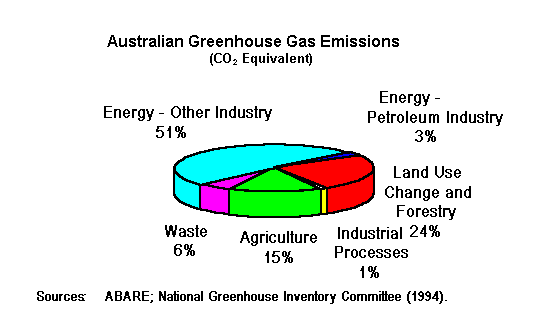

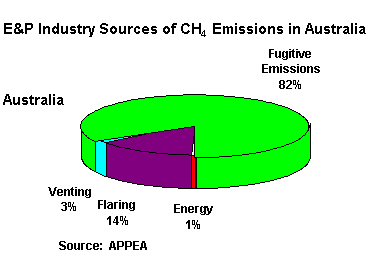
Decommissioning
Decommissioning of offshore production facilities has recently become a topical issue. As a producing field reaches the end of its operational life, several options are available for the removal and disposal of redundant facilities. The extent to which offshore petroleum facilities must be removed is determined by the responsible Government authority on case by case basis. Although the responsibility for decommissioning lies with the operators, government departments have a role in ensuring the acceptability of any removal program. Under the guidelines developed by the International Maritime Organisation (IMO) there are specific requirements depending on the water depth, weight of structure and date of construction. Various options are recognised for the removal and disposal process: Complete removal requires that no debris remain above the mudline at the platform site and the sea bed is returned to its natural state.
Partial removal is restricted to structures on which the entire base may be left in place. The requirement under the IMO guidelines is to remove all components of the structure to a minimum depth of 55 metres below the surface to ensure safe navigation in the waters above.
In situ toppling is only feasible in deep water, where it does not pose a hazard for navigation and fishing. Hazardous material and equipment which can be reused is transported onshore. The platform is toppled using explosives, or by underwater cutting of the supports.
Alternative uses : several alternatives for decommissioning exist including:
- Artificial reefs : the facility may be placed as artificial reefs in selected areas. Artificial reefs benefit the local ecology by creating additional habitats, which will support marine organisms which previously may not have been able to live there. Artificial reefs can be formed through placement of toppled and partially removed structures. A 'Rigs to reefs' program operates in the Gulf of Mexico, where some 100 platforms have been converted to artificial reefs.
- Marine research centres : this is an alternative where the facility remains in place, and is used by universities and research institutions for on site studies of the marine environment.
It is neither sensible nor practical to rule out offshore disposal of installations until environmental impact and safety assessments have been conducted for the range of options available to individual proposals. In some instances the safest and most environmentally acceptable alternative may be offshore disposal, with decisions being based on objective and scientific evidence, and assessed on a case-by-case basis.
Oil spills
The petroleum industry's safety record of handling oil and its products in Australia is excellent and has been maintained throughout the past two decades, with increasing volumes being produced and transported in Australian waters. Oil spills from offshore production have been insignificant, and while there have been some spills arising from shipping accidents, none have had lasting adverse effects on the marine environment. In over 25 years of operation in Commonwealth waters, the petroleum industry has produced nearly 4 billion barrels of oil and only 900 barrels of oil have been spilt (or about 0.00002%).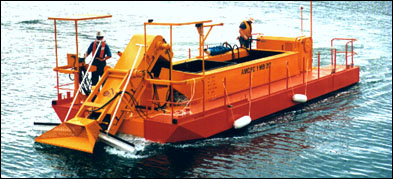
Statistics show that historically the petroleum industry is directly responsible for a very small proportion of marine oil spills however, the industry does not take the risk or consequences of spills lightly. There are strict regulations and management arrangements governing all aspects of exploration and production activities through to the delivery of refined petroleum products. In addition to the introduction of more rigorous inspections, standards, practices and safeguards on all installations and tanker fleets, the industry has established one of the best equipped marine oil spill response and training centres in the world. If an oil spill does occur off Australia's coastline, the oil industry, in association with government agencies, is well prepared to minimise possible impacts on the environment.
Marine protected areas
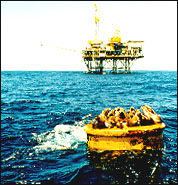
A Marine and Estuarine Protected Area (MEPA) is a defined area identified as environmentally significant and is designated by legislation for protection. There are many objectives for which MEPA's may be established, for example, protection of specific endangered species, breeding grounds for migratory species or for the sustainable use of resources. The industry supports the establishment of MEPA's for clearly defined objectives that have been determined on scientific evidence. Protected areas must be actively managed to be effective and achieve the objectives for which they were established. A range of activities, such as oil and gas exploration and production, fishing and tourism, may be permitted in some of the protected areas subject to strict conditions that ensure the management objectives of the MEPA can be achieved. This approach, often called multiple use, represents an important pathway to ecologically sustainable development. The petroleum industry is well aware of its responsibility to protect and preserve the environment in which it operates, wherever this may be - inside or outside a marine protected area. The industry works closely with environmental agencies to ensure that all interests are accommodated and protected.
The offshore continental shelf has the greatest potential for future discoveries of oil and gas. Continuing access to the offshore region for petroleum exploration and production is essential to maintain Australia's energy reserves. Energy supply and the petroleum industry are critical to the future performance of Australia's economy. The industry has significant expertise, and an excellent record, in operating in the marine environment and believes its activities are compatible with the objectives of marine conservation and management, permitting economic development that is sustainable in its environmental impacts.

